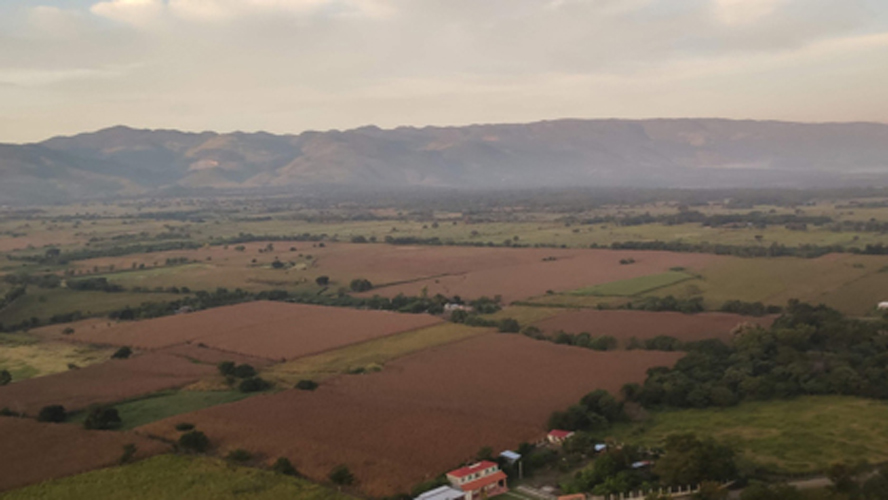Climate-smart agriculture for farmers in Mexico

My work as an ACES Global Food Security Graduate Fellow, reported in a previous blog post, leads me to explore how technology can improve crop production for smallholder farmers. Recently, I went to Mexico to know the reality of the farmers where the data I am using for my research is being collected. This was a great experience, helping me to understand better the real needs of the farmers, what kind of information can be more useful for them. and what are the complexities associated with this process. I landed in the municipality of Tuxtla Gutierrez, Chiapas – Mexico.
The main economic activities in the region are agriculture and livestock, but the place is also a famous tourist destination due to its beautiful natural landscapes and rich culture. Maize is the main crop grown, mostly for direct consumption. The production areas range from flat valleys to terraces and steep hillsides. This complex topography is depicted in the picture I took from the plane. Usually, the valleys are cultivated under more intensive management systems, with higher use of machinery, hybrid seeds and fertilizers, while in the hillsides only manual labor and landrace varieties are used.
The main reason we choose this time for the trip was that there would be a meeting with local farmers and many institutions to discuss the implementation of a Local Technical Agroclimatic Committee (LTAC) for the Chiapas region. This is part of an initiative coordinated by the CGIAR Research Program on Climate Change, Agriculture and Food Security (CCAFS) that seeks to understand the possible climate behavior in a territory and the recommendations to reduce the risks associated with the expected climate variability.
Led by the International Center for Tropical Agriculture (CIAT), CCAFS is a collaboration among all 15 CGIAR Research Centers and coordinates with the other CGIAR research programs. During two days we met with many people representing different sectors within the Mexican government, including the agriculture department and the national meteorological service, local universities and research centers, insurance companies and many farmers.
For the research in which I am participating, we are using data collected locally to build models that account for the effects of genotype, environment, and management into the crop production. We are trying to develop predictive models to evaluate the impact of farmers’ decisions in advance, enabling them to learn what could happen without the risks associated with actually doing it. The LTACs are a great opportunity to move from pure research to actual impact, by delivering forecasts and getting feedback from the farmers so the models can be made more robust and the farmers can make better decisions.
After going back to the CIMMYT headquarters in Mexico City, I was impressed by the diversity of the maize grown in the region. However, I was even more impacted by all the details about the history of Norman Borlaug. The success of his work was one of the reasons for the establishment of the CGIAR and CIMMYT. Through his work over a billion people worldwide were saved from starvation. He received the 1970 Nobel Peace Prize and is often called the father of the Green Revolution. In one of the plaques dedicated to him there was this quote, which brings a very contemporary message:
“No matter how excellent the research done in one scientific discipline is, its application in isolation will have little positive effect on crop production. What is needed are venturesome scientists who can work across disciplines to produce appropriate technologies and who have the courage to make their case with political leaders to bring these advances to fruition.”
I wish everyone had the opportunity to know more and to be inspired by his work. I highly recommend that you look at the opportunities available, especially at the Global Food Security Graduate Fellowship Program.
Exposition of improved maize varieties for different uses at CIMMYT.
The Office of International Programs in the College of Agricultural, Consumer and Environmental Sciences has initiated the Global Food Security Graduate Fellowship Program to support exceptional students who are interested in conducting research in a developing country, in collaboration with a mentor from an International Agricultural Research Center in the Consultative Group for International Agricultural Research or a national research institute devoted to food and agricultural issues. The first round of fellows included Rodrigo Trevisan, a graduate student in crop sciences advised by Nicolas Martin. Trevisan is working with CIAT, CIMMYT and the CGIAR Big Data Platform on resilient cultivar development with predictive analytics. Applications are being accepted for 2020 Global Food Security Fellows; see the call for applications here.